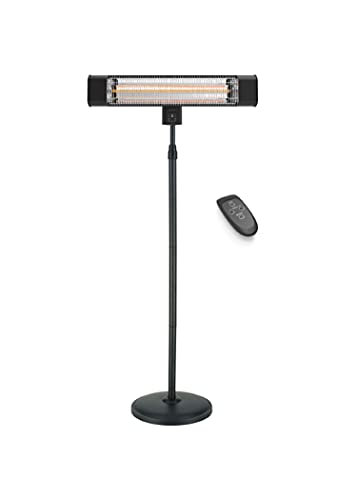How to Choose a Patio Heat Lamp Electric
There are many options available when you want to heat your patio. In contrast to propane models that require refills electric heaters can provide instant heat by flicking a switch or pressing the button.
These units don't emit any gases that could be a health hazard. Some offer adjustable heat settings for different distances.
Heater Type
You can relax outside well into the evening and all through the year with the proper patio heater. Patio heaters are available in a variety of varieties, including freestanding propane or natural gas models, as well as wall- or ceiling mounted electric radiant heaters. Your choice is contingent on the dimensions of your patio, existing power sources and individual preferences.
Most patio heaters use electricity, natural or liquid gas to generate heat. They release heat through convection heating in combination with radiant heating. Their output of heat is measured in watts and then converted to British thermal units (BTUs) for comparison. Certain models come with adjustable temperature settings that give you more flexibility.

A patio heat lamp combines the burner on top of a pole with a perforated screen that is reflective of the flames and radiates the heat downwards to warm people, furniture and other objects. Some patio heat lamps come with reflective reflectors on top of the burner and can be silvered to reduce the amount that heat is lost upwards.
small patio heater electric are among the most popular heaters for patios. They are able to heat multiple tables quickly and evenly. They can be portable and run off the propane tank or plugged into your natural gas line, which is greater convenience and lower initial installation costs but requiring an ongoing cost of fuel.
Gas patio heaters are becoming more popular as more houses have natural gas lines. These heaters are easy to install, but they require a gas line that's properly installed and operating to be secure. Natural gas heaters that are portable come with extension hoses that can help overcome this issue, however they could be a trip risk and can create an additional fire hazard when not being used.
Safety
The majority of electric patio heaters are safe to use in covered areas because they allow the heat to radiate outward instead of upward toward things that ignite, like the roof. They are not designed to be used on an unprotected roof. The heater should be placed at a minimum of 6" away from the ceiling and 18" away from the wall adjacent to avoid fire hazards.
Patio heaters made of propane and gas are generally only safe to install in enclosed areas with an enduring cover specifically designed for use in open air. These covers are usually made of fire-resistant fabric and come with an open roof that can be closed. The safety issues with these kinds of outdoor patio heaters are due to the fumes and flames they release. They should be placed away from flammable items, such as curtains and chairs.
Follow the guidelines and safety measures of the manufacturer before installing a patio heater or patio heat lamp. Be sure to select the one with UL and CSA certifications, and read the owner's manual thoroughly. Be extra cautious when it comes to pets and children, and ensure that the heater isn't near them when it's operating. Some free-standing patio heaters, such as EUROM, come with a built-in tipping safety that automatically shuts off the device in the event that it falls over.
If your patio heater is connected to a natural-gas line, you must be sure to check the condition of the line regularly and test it by a qualified professional for leaks. If the line needs to be replaced then you should hire an expert plumber who is licensed. A professional will be able to determine if the line is required to be connected to an underground pipe or not. A professional will also be able to ensure that the heater for your patio is connected to an outlet that is GFCI-rated (ground fault circuit interruptioner) to protect against electric shocks and fires.
Installation
The height at which a patio heater is placed affects the amount of heat it can radiate into the area. It is important that the heater be mounted in a safe distance from the surface such as plastic, which can deform as well as wood, which can get too hot. It is possible to mount the heater on a wall, structure or any other surface with traditional mounting brackets. Some models have soft start, which reduces peak current to safeguard your circuits.
